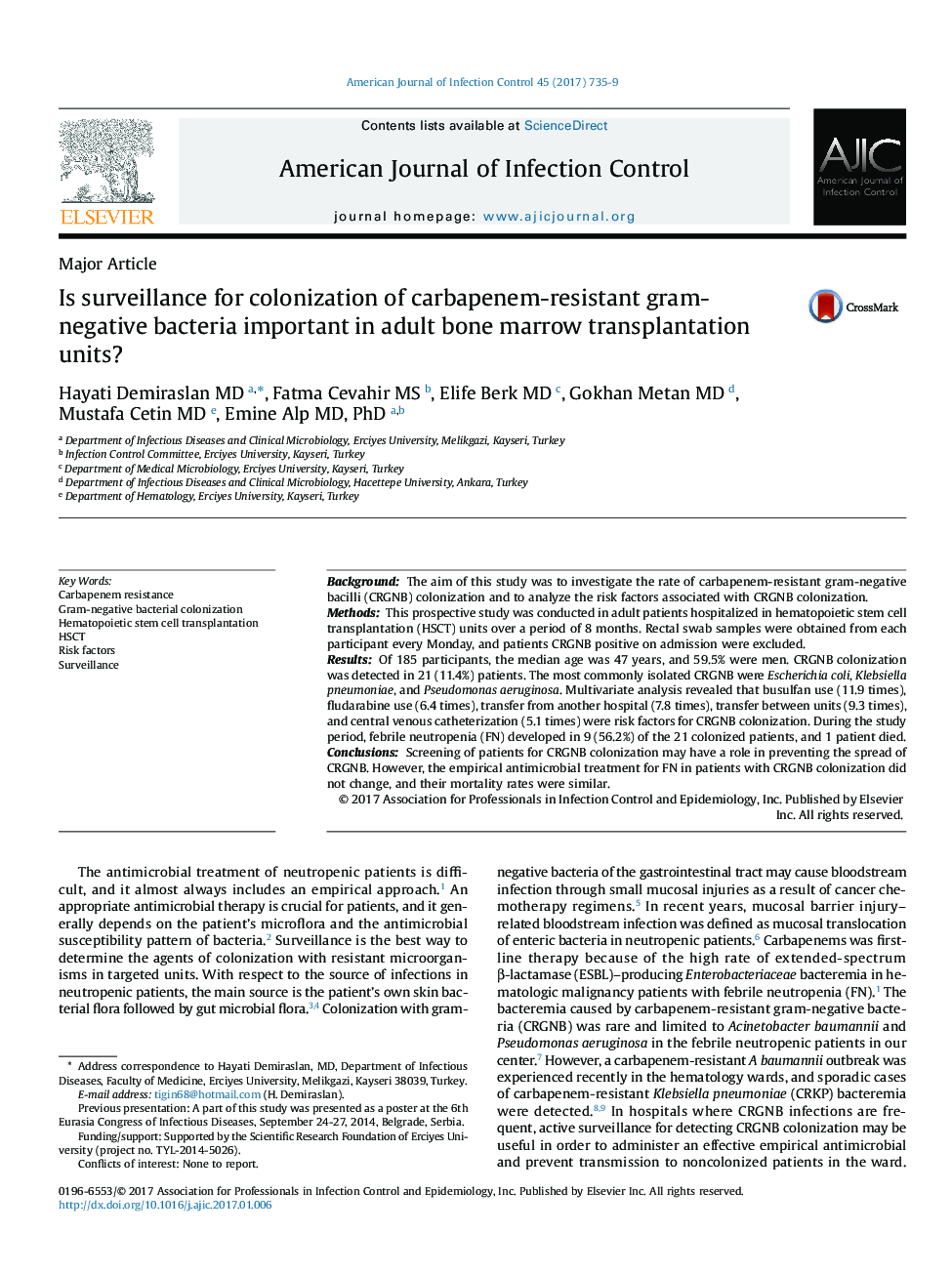| کد مقاله | کد نشریه | سال انتشار | مقاله انگلیسی | نسخه تمام متن |
|---|---|---|---|---|
| 5566405 | 1563442 | 2017 | 5 صفحه PDF | دانلود رایگان |
- The colonization rate with carbapenem-resistant gram-negative bacteria (CRGNB) is 11.4% in hematopoietic stem cell transplantation patients.
- Regimens including busulfan and fludarabine and transfer history increase the risk of colonization of CRGNB.
- Bacteremia with the same strain was detected in 23.8% of CRGNB-colonized patients (5/21).
- Colonization with CRGNB did not change the empirical antimicrobial treatment preference for febrile neutropenia.
- Colonization with CRGNB did not change the mortality rate.
BackgroundThe aim of this study was to investigate the rate of carbapenem-resistant gram-negative bacilli (CRGNB) colonization and to analyze the risk factors associated with CRGNB colonization.MethodsThis prospective study was conducted in adult patients hospitalized in hematopoietic stem cell transplantation (HSCT) units over a period of 8 months. Rectal swab samples were obtained from each participant every Monday, and patients CRGNB positive on admission were excluded.ResultsOf 185 participants, the median age was 47 years, and 59.5% were men. CRGNB colonization was detected in 21 (11.4%) patients. The most commonly isolated CRGNB were Escherichia coli, Klebsiella pneumoniae, and Pseudomonas aeruginosa. Multivariate analysis revealed that busulfan use (11.9 times), fludarabine use (6.4 times), transfer from another hospital (7.8 times), transfer between units (9.3 times), and central venous catheterization (5.1 times) were risk factors for CRGNB colonization. During the study period, febrile neutropenia (FN) developed in 9 (56.2%) of the 21 colonized patients, and 1 patient died.ConclusionsScreening of patients for CRGNB colonization may have a role in preventing the spread of CRGNB. However, the empirical antimicrobial treatment for FN in patients with CRGNB colonization did not change, and their mortality rates were similar.
Journal: American Journal of Infection Control - Volume 45, Issue 7, 1 July 2017, Pages 735-739
